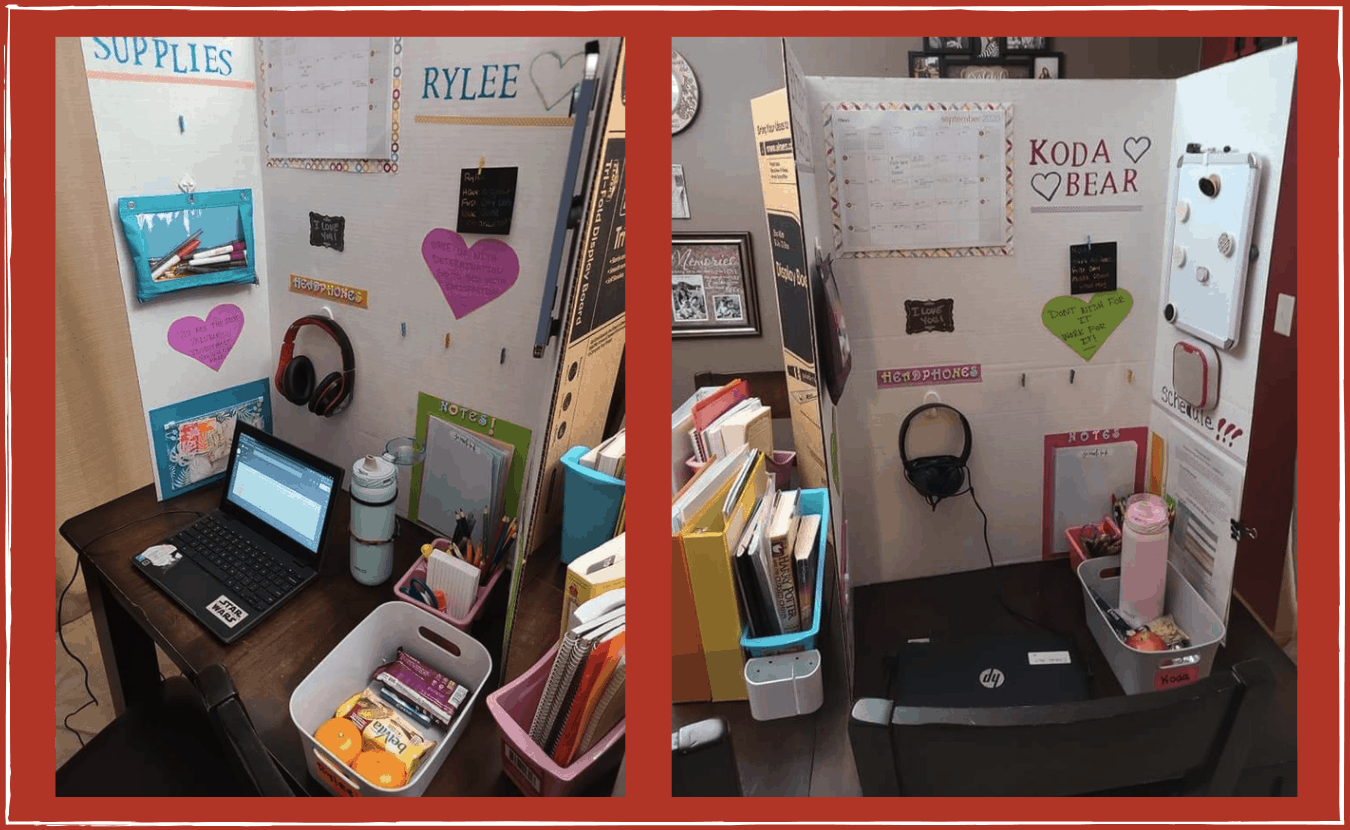How Parents Can Create Dedicated Learning Zones

By: Tina Eaton
There are several reasons why it’s vital to your student’s success to have a dedicated learning space.
First, of course, is that a dedicated space helps with focus. Studying in an out-of-the-way spot reduces exposure to noises and other distractions from loud TVs and family members coming and going.
The other reasons have more to do with the psychological impact of having a specific space.
First, there’s something about having a dedicated space for a dedicated action that helps motivate you to do that action.
Ever notice how someone sitting at your favorite table at the coffee shop or “stealing” your usual seat back in school seemed to throw you off? For whatever reason, we as humans attach certain activities to certain spaces, and we don’t always perform those activities as successfully if we feel like we’re in the wrong space. Setting your student up so they can go back to the same space over and over again when it’s time for school may go a long way in subconsciously putting them in a positive headspace for learning.
And then there’s the fact that the student will observe you, the parent, making a real effort to set up a special place for them to learn. This signals to them how important it is to you that they be successful with at-home schooling and that what they do while they’re in that space matters.
Showing that you’re serious about their education — even in unspoken ways such as setting up a peaceful study zone — is monumental in inspiring young students to take their education seriously, as well.
Get Creative Building a Dedicated Learning Space
Why start with developing a dedicated space for learning?
Because over half of parents say their kids are learning less from home than they would in the classroom. For nearly 70% of parents, distractions are the main obstacle when it comes to learning at home. Giving a student their own space is a great way to reduce these distractions and make virtual learning more productive.
But what if you’re one of the nearly 20% of parents for whom adequate space is an issue?
If you haven’t already dedicated some space to an “online classroom,” here are some unique ideas to help get your creative juices flowing:
- Look around for furniture you already have that can work double duty. Clear out that entertainment center in your spare bedroom and you have a workspace that’s just the right height for a younger child and has the perfect number of drawers for school supplies.
- If you do have space for a desk but are worried your student will quickly outgrow it or their need for it, construct a desktop from a painted door or other wood panel and balance it atop two drawer systems. As your kid gets taller, so can the drawers!
- Take a tip from our college dorm days and consider bunking your child’s bed to create a cozy space underneath for a small desk and chair.
- Empty out one of your larger closets and pop in a small desk and lamp for another cozy and very distraction-free, in-home classroom.
- Really pressed for space? Using the picture below as inspiration, use foam board or another material you have lying around to construct “cubicles” that are quick to set up (and break down!) on your dining room table to create instant “learning zones.”
- Finally, make sure you have uninterrupted internet service flowing to your all-new learning zone. While this sounds obvious, there are 20 million American households with unresolved complaints against their internet service providers right now! If you’re one such household whose complaints could hamper your student’s access to the internet, now is the time to work through those issues.

Why Having a Dedicated Learning Space Is Crucial to Student Success
What to Do in Your New Space: Go Beyond the Online Classroom With Other Engaging Learning Programs
In a paper by the Science of Learning and Development Alliance, formed to address inequity and underperformance in education, the group identified several strategies for optimizing the learner experience — including fostering active student engagement through thoughtfully-designed, interdisciplinary projects.
And there is no better time than now for such projects.
Now that the reality of possibly interminable remote learning is setting in, parents have gone from simply coping with online schooling to actively seeking out opportunities for additional digital learning.
For these parents, plenty of online programs exist. If you’re interested in engaging your student beyond what they’re learning in their remote classroom, here are some programs that piqued our interest:
- Galileo and Outschool connect students to a wide variety of creative courses and teachers
- Paragon One connects students with businesses for “externships”
- Prenda hosts the creation of “micro-schools” with small groups of students led by adult guides
- CommunityShare enables communities to become “human libraries”
As you can tell, It’s not all bad news when it comes to the online learning that has resulted from the Coronavirus pandemic. By recognizing the importance of implementing dedicated schooling zones and looking into alternative learning opportunities that go beyond standard educational programs, parents will be able to make the most of learning from home in the months to come.
To learn more about how students, educators, and schools are faring in the time of COVID-19, check out:
- How Students are Strengthening Life Skills During School Closures
- COVID’s Impact On How Students Serve Others
- Teacher Care: Apps and Ideas for Finding Balance
Tina Eaton is a long-time remote worker who spent time living in a tiny home, learning to utilize small spaces for a variety of purposes.
Stay in-the-know with innovations in learning by signing up for the weekly Smart Update.





0 Comments
Leave a Comment
Your email address will not be published. All fields are required.